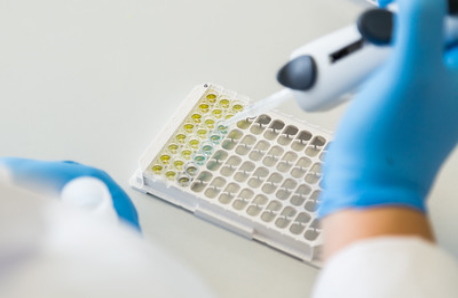ToxiPlex - Mycotoxins Test from a one blood serum sample
Mycotoxins are a big group of compounds, with a range of chemical structures and toxicological characteristics.
Fungi, and their metabolites, contaminate raw materials that are usually used in the preparation of human food and animal feed. The main crops affected are grains (rice, wheat, rye, barley, corn, soybeans), dried fruits, nuts, coffee and spices. Contamination may occur naturally during the growth of the crop or may be a result of improper transport and storage processes.
Fungal contamination control measures, some prevention strategies and improved processing technologies can help limit mycotoxin contamination. However, despite these efforts, up to 60%–80% of food crops are still contaminated by mycotoxins.
Exposure to mycotoxins does not always have to be related to food consumption. There are studies that explored the occurrence of mycotoxins in working or living environments and the results showed that exposure to mycotoxins can be related to these places, too. Mycotoxicosis can cause acute and chronic health effects to humans and livestock via ingestion, inhalation and contact with the skin, as well as through entering the lymphatic system and blood stream. While acute effects manifest within 72 h of exposure, chronic effects take more than 72 h and may increase to months, years, or even decades. They harm the macrophage system, impair protein synthesis, intensify the response to bacterial endotoxin, and inhibit particle clearance of the lungs. Symptoms of mycotoxicosis are based on the type of mycotoxin, the age, sex, and health of victims, the mycotoxin concentration, and the length of exposure. The impact of mycotoxins on human health depends on the type of toxin, its metabolism, pharmacokinetics and the accumulation of the mycotoxin, exposure conditions and the age, gender, immune system and health status of the exposed individual.
For this purpose, Toxiplex has been developed as an enzyme-linked immunosorbent assay (ELISA) for the determination of 5 types of mycotoxins simultaneously from a one blood serum sample:
- Aflatoxin B1: they are produced by several species of Aspergillus, especially Aspergillus parasiticus and Aspergillus flavus but also by Penicillium species. The Aflatoxin are mostly found in cereals (wheat, sorghum, rice, millet, guinea corn, corn, etc.), tree nuts (almond, pistachio, coconut, walnut, etc.), oilseeds (peanut, sunflower, cotton seeds, soybean, and sesame), spices (garlic, black pepper, coriander, turmeric, ginger, and chili peppers), also in different environments such in the air of Apartments and basements and in filters from air-conditioning systems by passenger vehicles. Most aflatoxins are genotoxic, hepatotoxic, mutagenic, etc. and can hinder growth in children. AFB1 is most toxic of all and also a very carcinogenic toxin which has been linked directly to many health problems, including liver cancer, in several animals. The understanding of induction of mutations, DNA damage, and metabolism in individuals with dietary exposure to aflatoxins contributes to the general evaluation of their adverse effects on human and animal health.
- Deoxynivalenol: they are produced by Fusarium graminearum and Fusarium culmorum. The Deoxynivalenol are mostly found in Grains (such as wheat and beans), spices, etc. This toxin has been shown to cause acute toxicities in humans, with the main symptom being severe gastrointestinal toxicity also increased central serotoninergic activity and immunosuppressive effect.
- Fumonisin (B1&B2): they are mycotoxins produced by Fusarium species. This are mostly found in Grains (such as maize, wheat, and beans), spices, etc. Both fumonisin and F. verticillioides contamination in maize positively correlates with cancer of the esophagus in rats, as indicated by studies. Exposure to fumonisins can result in neural tube defects, most likely via disrupting the biosynthesis of sphingolipids and subsequent sphingolipid depletion, which are important for the functions of lipid rafts, particularly folate processing through folate transporters with high affinity.
- Ochratoxin A: is a toxic mycotoxin produced by Aspergillus niger, Aspergillus ochraceus, Penicillium verrucosum, and Aspergillus carbonarius. This are mostly found in cereals (especially wheat and barley) and their products, dry vine fruits, spices, licorice, coffee beans, wine, grape juice, roots, meat, (particularly pork, from animals that consumed infected grains), etc. This toxin has been found in different environments such in the air of apartments and basements and in filters from air-conditioning systems by passenger vehicles and houses. Ochratoxin is a nephrotoxin and a carcinogen, and it has been directly linked to tumors in the human urinary tract, although the International Agency for Research on Cancer still considers it a possible carcinogen to humans.
- Zearalenone: It is a nonsteroidal estrogenic metabolite produced by some Fusarium and Gibberella species, such as Fusarium graminearum. Are mostly found in Grains (especially maize, rice, millet, sorghum, rye, oats, barley, wheat, etc.), spices, etc. Zearalenone can cause an increase in the incidence of pituitary tumors and liver cell in mice, in line with the hormonal mode of carcinogenic actions. Elevated serum levels of zearalenol and ZEA are associated with early puberty. ZEA’s ability to induce hyperkeratotic papilloma in the rat esophageal squamous epithelium forestomach suggests its involvement in tumor development in the gastrointestinal tract. ZEA has been shown to be genotoxic and also has the ability to cause hepatocellular adenomas in mice.
References:
Habschied, K.; Kanižai Šari´c, G.; Krstanovi´c, V.; Mastanjevi´c, K. Mycotoxins—Biomonitoring and Human Exposure. Toxins 2021, 13, 113. https://doi.org/10.3390/ toxins13020113
Arce-López, B.; Lizarraga, E.; Vettorazzi, A.; González-Peñas, E. Human Biomonitoring of Mycotoxins in Blood, Plasma and Serum in Recent Years: A Review. Toxins 2020, 12, 147. https://doi.org/10.3390/toxins12030147
Awuchi, C.G.; Ondari, E.N.; Nwozo, S.; Odongo, G.A.; Eseoghene, I.J.; Twinomuhwezi, H.; Ogbonna, C.U.; Upadhyay, A.K.; Adeleye, A.O.; Okpala, C.O.R. Mycotoxins’ Toxicological Mechanisms Involving Humans, Livestock and Their Associated Health Concerns: A Review. Toxins 2022, 14, 167. https:// doi.org/10.3390/toxins14030167


